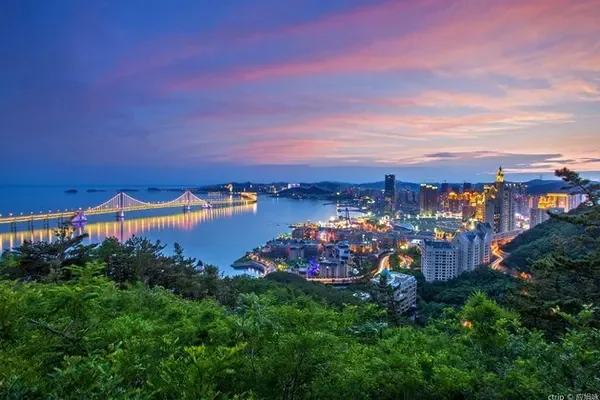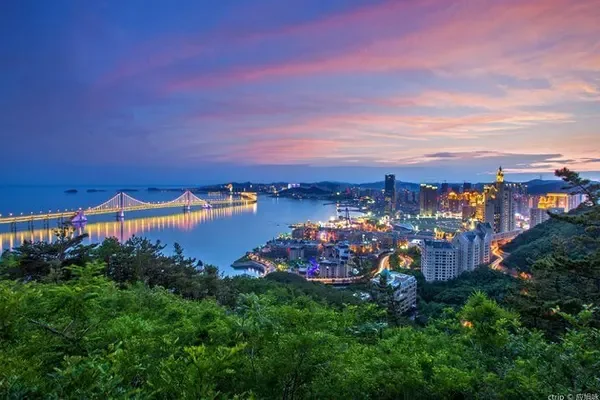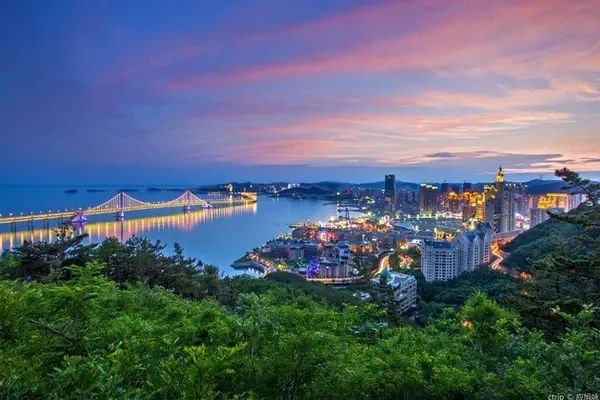On the northwestern edge of the Junggar Basin, the seventh largest basin in the world, there is a city born and prospered by oil - Karamay.
Karamay, which means "black oil" in Uighur, is the first large oil field explored and developed after the founding of New China. Because of the long distance, many people are not familiar with it.
Karamay used to be a water-scarce city with a vast Gobi desert. As sung in "The Song of Karamay": "You have no grass, no water, and even birds don't fly..."

Today's city, Yi Zhongtian once wrote in "Karamay Fu": It is charming and charming, comparable to the shade of green fields; "
This is my seventeenth trip to Xinjiang. I just left in June this year. After more than two months, I returned to Xinjiang, to this land that I have always dreamed of.
Use five days and four nights to get a deep understanding of the city of Karamay, and you will find that it is too different from what you imagined. Summarize the journey of those few days, and share with you the five most worthwhile places to visit!
1. Karamay Big Oil Bubble
Karamay Big Oil Bubble is a themed sculpture located in the Petroleum Memorial Square in Ke No. 1 Well Scenic Area. This is the landmark sculpture of Karamay. If you come to this city for the first time, remember to check in here.

Karamay Big Oil Bubble is 15 meters high, with a maximum diameter of 28 meters, and consists of four door openings and four fulcrums, of which the door opening is 3.5 meters high.
Its design is inspired by the oil bubbles continuously overflowing from the oil pool of Heiyou Mountain, so people affectionately call it "big oil bubbles".

Under the sun, there are countless mirrors and countless selves.
The whole sculpture is polished and made of stainless steel, so that the surrounding landscape and tourists can be reflected in the sculpture, which not only brings a sense of movement to the sculpture, but also allows people to form a scene of their own.

The large oil bubble has a strong sense of modernity and visual impact, symbolizing the far point and starting point of Karamay, and witnessing the development of the oil city through the mirror reflection of the oil bubble.
As long as you see this big oil bubble sculpture, you will immediately know that you are in Karamay.

The temperature in Karamay is very comfortable, with a large temperature difference between morning and evening, and you don’t need to turn on the air conditioner to sleep at night at the end of August. You can also come here for a walk at night, it will be a completely different landscape.
Regardless of day or night, it is worth a trip to Karamay Oil Bubble.

2. World Devil City
When it comes to Karamay, the most famous one is Devil City.
Devil City, also known as Wuerhe Wind City, has been selected as "China's Most Magnificent Yadan" and "One of the 50 Most Worthy Places in China for Foreigners".

This is the third time I stand in the evening of Devil City, and the memories come flooding back. Looking at the golden sunset, gradually disappearing into the distant mountains, looking at these wind-eroded landforms in arid and windy environment, strange shapes, high and low.
The Devil City under the sunset is the most beautiful moment here.


Devil City is 100 kilometers away from Karamay City, located in the Uerhe Mining Area in the lower reaches of the Jiamu River. At the entrance of Devil City, you can take a cute little train and go deep into the hinterland of Devil City. You can also take a paraglider and see the land from the sky.
Here is a typical Yardang landform area. Devil City is northwest and east-west, with a length and width of more than 5 kilometers and a radius of about 10 square kilometers. Standing on a high ground, you can't see the end at a glance.

There is no grass or tree here, but there are black whetstones and sandy seas everywhere, and yellow clay statues. Under the blue sky, all kinds of shapes are lifelike.
It is hard to imagine that during the Cretaceous period more than 100 million years ago, this was a huge freshwater lake, with lush plants growing on the lakeshore, and many ancient animals such as Urhe Stegosaurus and Junggar Pterosaur lived and multiplied in the water.

As night falls, you will feel its extraordinary horror when you go deep into the Devil City. As the sun went down, the wind and sand suddenly blew up, as if souls of the dead were whining in the castle.
There is no devil in the devil city, the devil is in people's hearts.

3. Landscape of Heiyou Mountain
Once you go to Heiyou Mountain, you will know Karamay better. Black Oil Mountain is more than two kilometers away from the center of Karamay, where important oil seedlings emerge from the oil field.

Here, you can also take a close-up photo with the "kowtow machine" in the oil field.
When you enter the territory of Karamay, you can see the endless derricks and more than 30,000 pumping units - "kowtow machines" working day and night, which is quite shocking.

Due to the change of the earth's crust, the underground oil is affected by the formation pressure, and it continuously seeps to the surface along the rock fissures. The light part of the oil volatilizes, and the remaining thick liquid condenses with the sand to form this black oil mountain.
Walking up the boardwalk, you can see a stone monument nearly 3 meters high, and a statue of an old Uighur riding a donkey and playing Rewap.


Crude oil has been overflowing here for many years, forming a group of asphalt mounds, the largest of which is 13 meters high and covers an area of 0.2 square kilometers.
The oil quality of Heiyoushan is precious low-condensation oil. According to the prediction of geologists, as early as 200 million years ago, Heiyoushan had already begun to spill oil.

"Insanely rich, bubbling beauty" probably refers to this. There are more than 100 crude oil wells in Heiyou Mountain, and there are abundant crude oil underground, which flows out wantonly.

The oil surface here is as calm as a mirror, with occasional oil bubbles...
It is very interesting that there is a jumping spring here. It is said that the heavier the person jumps a few times, the more bubbling, which makes the friends jump here for a long time.
4. Night tour of Karamay River
In Karamay, there is one of the best artificial rivers in China - the Karamay River.
Water source, for a city located in an arid desert area, is like blood in the human body. The Karamay River is the beautification master of Karamay's ecological environment and the main tourist attraction in the urban area.
Since there is water, Karamay City has the appearance of a modern city, with green areas and a better living environment.

Follow my lens to see the most beautiful night scene in western my country and take a night tour of the Karamay River.
"The Karamay River originates from the Irtysh River. It was an artificial river developed by the whole city in the 1990s. At that time, the oil workers had a one-month rest last month. In order to excavate the Karamay River, the workers were mobilized to ensure crude oil production and use the rest time to support The construction of the Karamay River, when I was young, I remembered that my father, who was a driller, used to drive excavators on the construction site during his rest."
I was deeply moved by a fan's message. How many people remember this river.

On this river, there is the world's smallest cable-stayed bridge, which was selected into the Guinness Book of Records. We will start our night tour from the pier here.

At that moment, I was sitting on a painting cruise ship, swaying in the Karamay River, and I was very impressed.
For an hour and a half, I watched the river meander in the city, watched the charming night scenes on both sides, and watched the cruise ship cross one bridge after another.
Karamay, which used to be a Gobi desert, has such a river, how difficult it is!

The Karamay River is the only artificial river built in the Gobi Desert in my country, with a total length of 8.51 kilometers, starting from the Jiulongtan Scenic Area. It took nearly 3 billion to divert the river from the Irtysh River.
Without this river, there would be no Karamay today.


5. Baiyanghe Grand Canyon
In the Baiyanghe Grand Canyon in Karamay in early September, Populus euphratica has gradually turned yellow.
Imagining that in another half a month, here will be the appearance of Jinqiu, thinking, should we come again at that time?

Where there is water, there is life.
A clear river flows through this dry land, and the river has many meanders, winding down the valley. Raising the drone, you can clearly see the veins of the earth.

I was standing by the small river in the canyon, wearing a red dress, looking at the crystal clear water. The trees here are lush, the tall Populus euphratica is tall and handsome, and the rocks on both sides are as brown as blood.
Populus euphratica is one of the ancient and rare tree species in Xinjiang. It is known as a "living fossil tree" and has strong vitality. "You can live for a thousand years without dying, die without falling for a thousand years, and fall without dying for a thousand years"...it can be called eternal.

The Baiyanghe Grand Canyon, like the Devil City, is not far from Karamay Urho District. The most beautiful shooting season here is autumn at the end of September.


The canyon scenery composed of Gobi, rocks, Populus euphratica, clear water and blue sky makes people linger and forget to return.
Baiyang River meanders, with yellow sand everywhere. The vast and monotonous Gobi, because of the Baiyang River, shows the richness, magic and beauty of Karamay.

Karamay, here is the world's most magnificent Yardang - World Devil City; the world's geological wonder - Heiyou Mountain; China's most magnificent oil industry base - Baili Oil Region; and the unique canyon scenery - Baiyang River canyon.
Of course, the "three treasures" here: oil souvenirs, colorful purple sand pots, and golden silk jade are also good travel souvenirs. There are many local delicacies in Karamay, and I will share them with you slowly.



